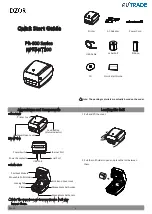
18
A GUIDE TO INGREDIENTS
The major ingredient in bread making is flour, so selecting the right one is the key to a
successful loaf.
Wheat flours
Wheat flours make the best loaves. Wheat consists of an outer husk, often referred to as
bran, and an inner kernel which contains the wheat germ and endosperm. It is the protein
within the endosperm which, when mixed with water, forms gluten. Gluten stretches like
elastic and the gases given off by the yeast during fermentation are trapped, making the
dough rise.
Strong or Very Strong White Bread flours
These flours have the outer bran and wheat germ removed, leaving the endosperm which
is milled into a white flour. It is essential to use strong or very strong white flour or white
bread flour because this has a higher protein level essential for the development of the
gluten. Do not use ordinary plain white flour or self raising flour for making yeast raised
breads in the bread maker because you will not get a good result. There are several brands
of white bread flour in the shops – look for STRONG or BREAD flour on the bag.
Strong or Very Strong Wholemeal or Whole Wheat Bread flours
Wholemeal flours include the bran and wheat germ and have a nutty flavour. Wholemeal
flour gives a coarser textured bread. Again, look for STRONG or VERY STRONG wholemeal
bread flour. If you make a loaf using all wholemeal flour it will be denser than white
loaves. Wholemeal doughs rise more slowly which is why there is a special programme on
this machine. For a lighter loaf replace part of the wholemeal flour with white flour.
Granary Strong Bread flours
A combination of white, wholemeal and rye flours with malted whole-wheat grains,
which adds texture and flavour. You can use this on its own or in combination with strong
white flour.
Non Wheat flours
Other flours such as rye can be used with white and wholemeal bread flours to make
traditional breads like pumpernickel or rye bread. Adding even a small amount can add
an interesting tang to your loaf. Do not use it on its own as the dough will be very sticky
and the loaf will be heavy and very dense. Other grains e.g. millet, barley, buckwheat,
cornmeal and oatmeal; These grains cannot be used alone to make bread as they are
unsuitable but they can be added in small quantities to white bread flour – try replacing
10 - 20% of white bread flour with any of these.
Salt
A small quantity of salt is essential for bread making. It helps to develop the dough and
gives flavour. Use fine table salt or sea salt rather than coarse ground salt which is best
kept for sprinkling on top of hand-shaped rolls etc. to give a crunchy texture. Low salt
substitutes are best avoided as most do not contain sodium.
















































